Cyclist
What does it take to win the Giro-Tour double?
‘The double requires strength of character, an ability to perform on the key days,’ Tour de France legend Raphaël Geminiani says in William Fotheringham’s Fallen Angel. ‘Only the greats of cycling have it in them.’
The Giro-Tour double is a cycling record of old. Few riders have succeeded in winning cycling’s two biggest stage race titles in the same calendar year.
In total, just seven riders have taken both the maglia rosa and the maillot jaune in the same season. These riders are: Fausto Coppi in 1949 and 1952, Jacques Anquetil in 1964, Eddy Merckx in 1970, 1972 and 1974, Bernard Hinault 1982 and 1985, Stephen Roche in 1987, Miguel Induráin in 1992 and 1993, and Marco Pantani in 1998.
Pantani remains the last rider to win the two races in the same year, in 1998 – a remarkable 26 years ago. This year, Tadej Pogačar will try to enter this elite club of riders and cement his name among the sport’s greats.
Fauto Coppi: The architect

In the post-war period, Fausto Coppi was the Grand Tour headman. Back in these days of intrepid and borderline inhumane stages, Coppi often prevailed. So is his strength, he claimed two Giro-Tour doubles, becoming the first person to do it.
This first came in 1949. At the Giro d’Italia that year, Coppi left his mark by taking three stage wins. A reversal in the final stages saw the Italian overcome a deficit to claim a whopping 23-minute lead over his rival Gino Bartali by the time the race concluded. A month later at the Tour, it was once against Coppi and Bartali, but this time as Italy teammates, and they put just about put aside their differences for Coppi to take the win on his Tour de France debut.
- Read more: Tour de France history: Coppi triumphs on debut for first Giro/Tour double
- Read more: Tour de France history: Coppi christens Alpe d’Huez en route to second Giro/Tour double
Anquetil and Merckx: The renaissance men

Known for their Tour de France domination in the 1960s and 1970s, Anquetil and Merckx unsurprisingly took on the mantle of repeating Coppi’s Giro-Tour feat during their respective primes.
Jacques Anquetil competed at the Giro on six occasions, winning the race twice, and started eight Tours, winning five. However, 1964 is the important year for the Giro-Tour double.
That year, Anquetil was among just a handful of foreign hopefuls for the Giro. Regardless, the Frenchman silenced the Italians by taking a stage win and the jersey early on and keeping it all the way to the end. At the Tour de France, Raymond Poulidor pushed Anquetil in the final week, closing the gap to only a handful of seconds. Anquetil ultimately triumphed against ‘PouPou’ in the final time-trial, securing his fifth Tour title by 55 seconds. These would be his last Tour and Giro titles.
Of course, Eddy Merckx has clinched this honour more than any other rider. In 1970, 1972 and 1974 no less. In 1970, the Giro d’Italia win came by accident to some extent as ‘The Cannibal’ was unwell all spring. Merckx started winning early on Stage 2 but knee issues plagued the rest of the Giro. That said, he burst through in the final week to seal the maglia rosa before winning his second consecutive Tour. Despite a strong challenge from Poulidor in 1972, Merckx rounded out another double, and this time he secured the Hour record in the same year – a unique achievement.
Bernard Hinault and Miguel Induráin: A formality
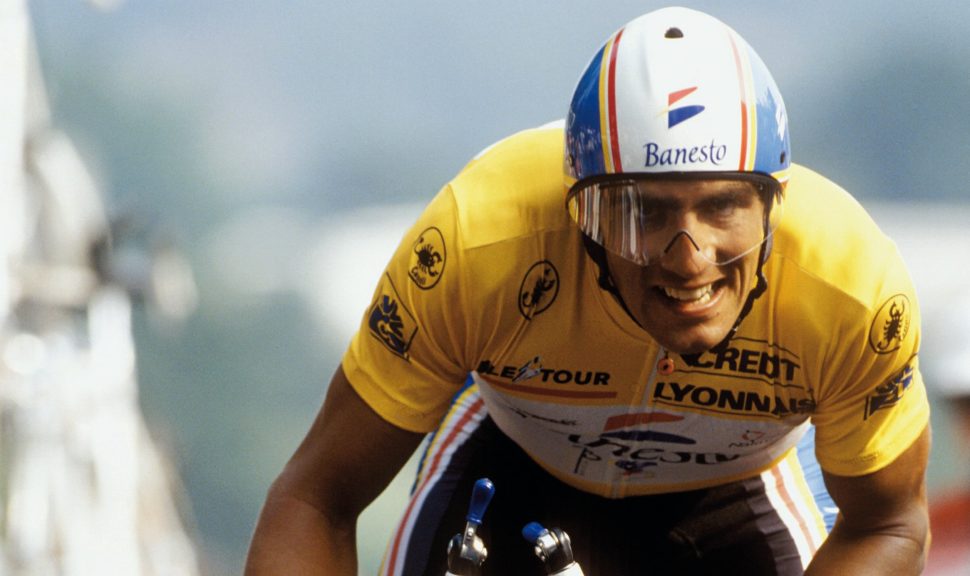
After Merckx’s Giro-Tour doubles in the 1970s, the hegemons of the 1980s and 1990s were Bernard Hinault of France and Miguel Induráin of Spain.
‘The Badger’ from Saint-Brieuc rarely missed the top step of the Grand Tour podium throughout his career. Hinault completed three Giri d’Italia, winning all three; took on the Vuelta twice, winning both; and eight Tours de France, winning five times. In 1982 and 1985, he finally reaped the rewards of this consistency by winning both the Giro and the Tour in the same season. Hinault’s dominant Tour win in 1982 even came with a sprint victory on the Champs-Elysées. Beat that, Tadej Pogačar. Oh, the Tour doesn’t finish in Paris this year, as you were.
Miguel Induráin was similarly emblematic and dominant in his era. His time-trial prowess and steady mountain legs kept him at the top of the GC standings in Grand Tours throughout the early 1990s. In 1992, he claimed his first Giro crown and not long after he held his own at the Tour to seize the double for the first time in his career. After his 1992 Tour win, Hinault went on record to say, ‘Induráin is the best rider of his generation but he has won this Tour quietly, without great opposition.’
Induráin would not suffer from any post-Giro-Tour hangover, however, replicating the feat just one year later in 1993. Induráin remains the only rider to complete a double-double, winning the Giro and Tour back-to-back in two consecutive seasons.
Marco Pantani: The heroics of 1998
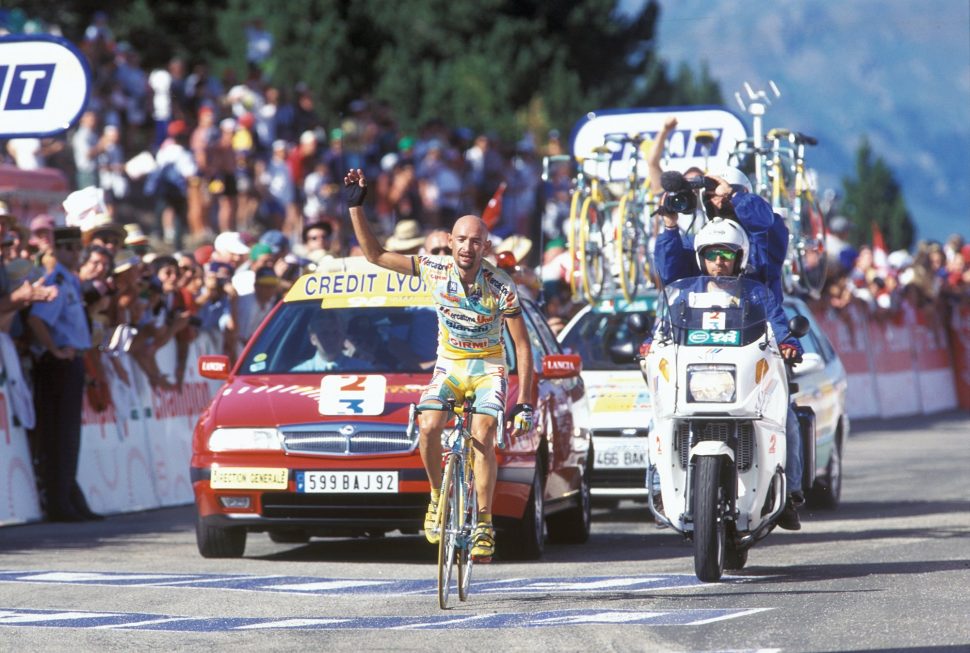
Marco Pantani is held in high regard and legend in the historical archives, mainly due to the intrigue of his troubled life and struggles. After some close calls at the Giro and Tour the years prior, 1998 was to be his year.
The 1998 Giro d’Italia proved to be the tougher of the two Grand Tours to win for the rider affectionately known as ‘Il Pirata’ – the pirate. The bald-headed Italian from Cesenatico started the race on the back foot, losing crucial time to the prior year’s Vuelta champion, Alex Zülle. In due time, the Swiss shed minutes on the climbs as Pantani laid claim to two stage wins at Piancavallo and Montecampione. The race concluded in Milan with Pantani in pink and perennial Giro favourite Pavel Tonkov in second place.
The Grand Boucle that year began in Ireland, with more talk of doping than Pantani’s chance to replicate the feats of Merckx and Induráin before.
Pantani blew the race apart at Plateau de Beille, claiming stage glory. He would have to wait another handful of days before taking the yellow jersey at Les Deux Alpes where Pantani put minutes into race leader Jan Ullrich and the eventual runner-up Bobby Julich.
The 1998 Tour de France saw among many notable storylines, the Festina Scandal. This doping affair was triggered by the uncovering of the French Festina team who were raided and slowly kicked out of the Tour de France. Many riders left the race early, and Pantani’s victory was overshadowed by the omnipresent threat of doping in the sport during this era.
Since the Pirate’s 1998 challenge
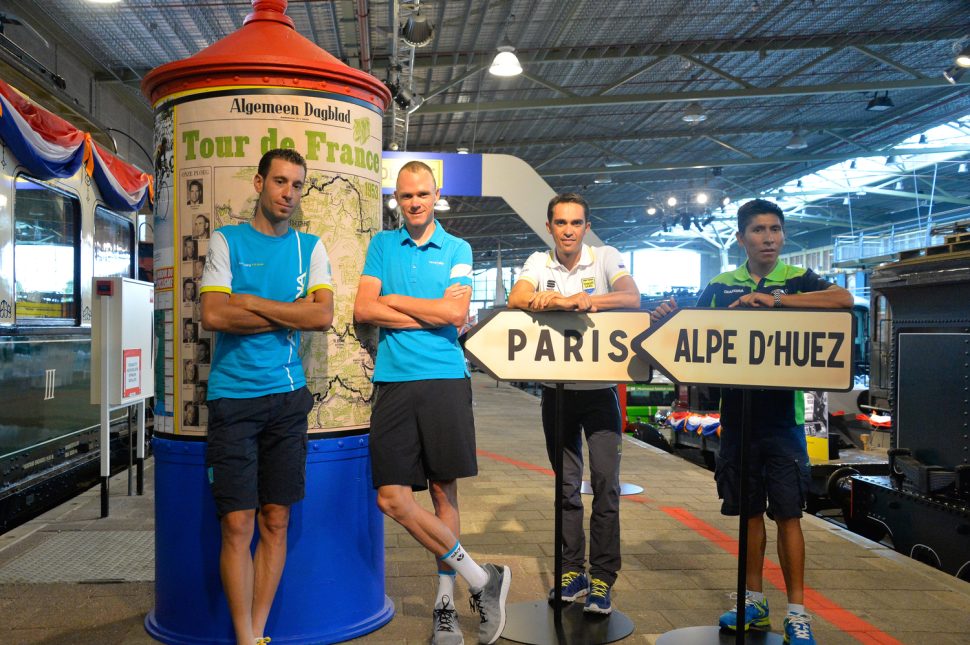
In recent years, the Giro-Tour double has been tried and failed. In the modern era, only a handful of riders have even dared to target the two. Many speculate that the feat has now become impossible.
Much has changed in the sport since 1998: helmets have become mandatory, training has become a data minefield, and far fewer riders opt to ride the two Grand Tours in the same year. Before, the idea of a Giro-Tour double was not as outlandish; these days it’s generally seen as accepting defeat in France.
Alberto Contador: Trial and Error
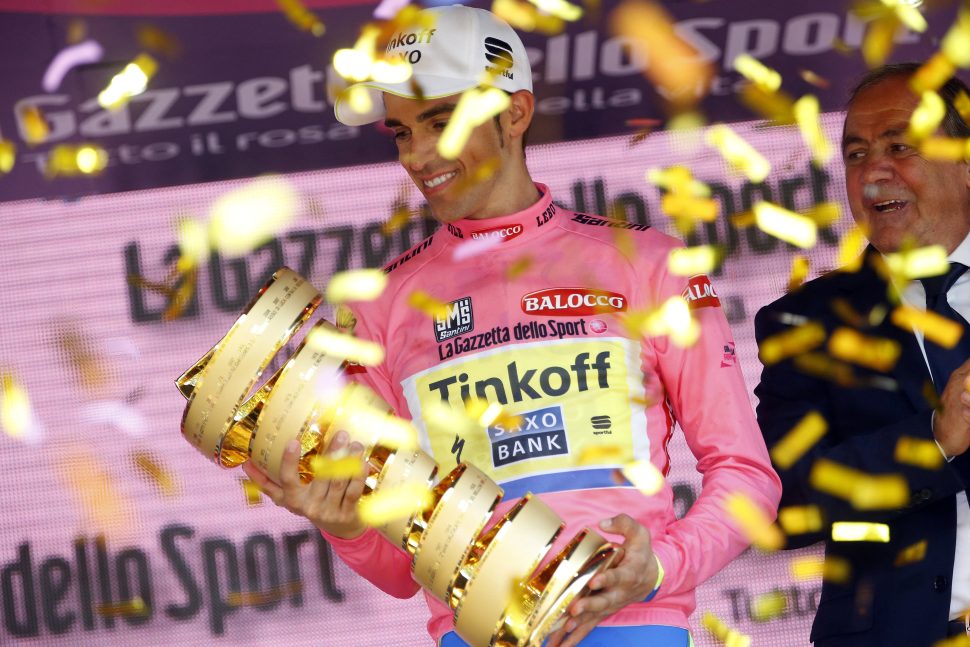
A year after winning the Tour de France in 2010 – obligatory asterisks needed for that one, following a retrospective doping suspension – Contador decided to try to pull off the Giro-Tour double. The Giro went swimmingly, he took a stage win and the pink jersey at the end of the first week of racing and he wouldn’t let his hands off the maglia rosa until the race’s conclusion, ticking the first box.
With the Tour approaching, more questions were being asked of Contador’s potential doping violation at the previous year’s Tour. The Spaniard still hit out at the Tour in an attempt to seal the deal before any suspension would come into place. However, his big ambitions proved fruitless. He managed a fifth place overall, despite shedding minutes in the first half of the race. To add insult to injury, he was later stripped of his 2011 Giro title.
In 2015, Contador attempted the feat once more. This time with less conversation about dodgy steaks. He began his campaign in flying form at the Giro. El Pistolero dominated the race, holding off the Astana tirade of Fabio Aru and Mikel Landa in the mountains.
The attritional Corsa Rosa seemed to have affected Contador’s Tour form, however, and the Tinkoff leader’s high hopes were dashed in the Pyrenees as he failed to shake off the podium contenders. A consistent mid-table Tour yielded a respectable fifth place in Paris, putting to bed one last chance at doing the double.
The 2018 anomaly: Chris Froome and Tom Dumoulin

2018 saw a strange blip where the Giro was a prime warmup race for the Tour de France. Firstly, Tom Dumoulin laid down his hopes in doubling up at the Giro and the Tour. The ‘Butterfly of Maastricht’ rode a consistent race, waiting in the wings in second place from the first weekend of racing until the last. At the Tour, the Dutchman characteristically rode onto the podium in steady fashion.
On top of a Giro-Tour double, Chris Froome had more ambitious eyes in 2017/18. The British star of old won both the Tour de France and the Vuelta a Espana in the latter half of 2017. He then continued the gold rush at the 2018 Giro d’Italia with one of the greatest comebacks in cycling history, making him the first man to achieve a royal flush of Grand Tours in a year. Greedy for more, he targeted the 2018 Tour de France.
However Froome was overshadowed in the Grand Boucle by his teammate Geraint Thomas, who took the yellow jersey early on after a stage win at La Rosière. From there, the Welshman stamped his authority on the race to clinch his only Grand Tour victory. Froome did manage to slot onto the podium in third place, but the double dream was dashed.
The extremities: the ‘Triple Crown’

The Triple Crown is the next step in cycling sweeps. In order to complete the triple crown, Pogačar has to round off his year with a win in the road race at the UCI Road World Championships. Only two riders have ever won the Giro, Tour and Worlds road race: Eddy Merckx and Stephen Roche.
1974 saw Merckx’s greatest sweep, however, it came close to crumbling down. Pneumonia in spring threatened his presence at the Giro, but he managed to make it to the start. Then, a wobble on the 20th stage saw his lead fall to just 12 seconds ahead of Gianbattista Baronchelli, making it the tightest Grand Tour win in Merckx’s career.
Later that year, the Cannibal stormed to another Tour de France title, banishing his early season woes. A win in the opening time-trial saw Merckx become the early clubhouse leader before stretching his legs in yellow into the second and third week of racing.
The final hurdle to the Triple Crown, the World Championships, was another close affair. Merckx and eternal rival Raymond Poulidor went tete-a-tete in Montréal, with Merckx coming out on top in a final sprint to the line.
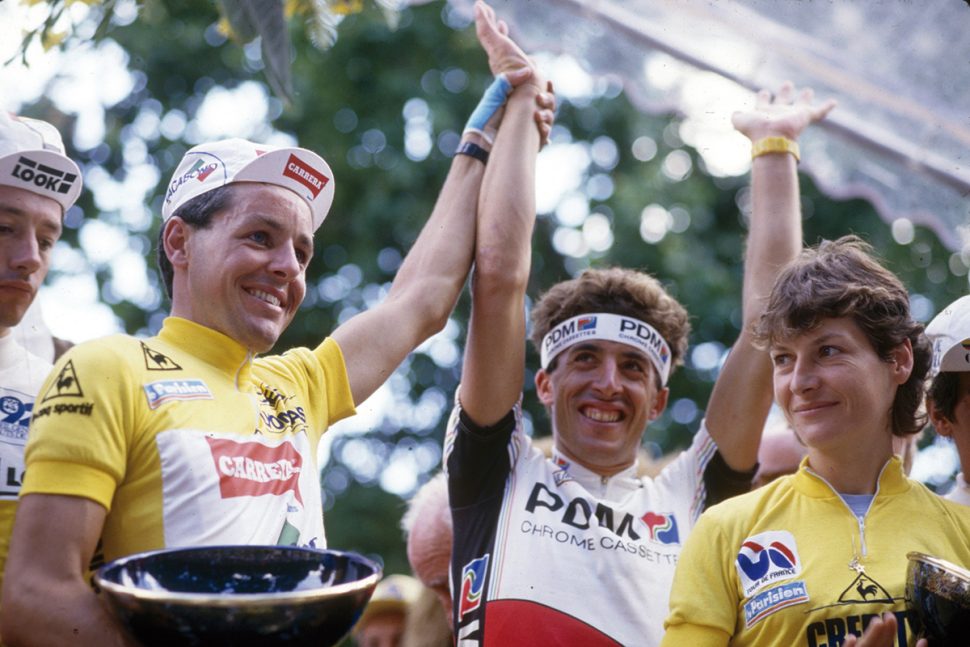
Ireland’s Stephen Roche never planned to win the triple crown. He began his golden year in an uphill struggle at the Giro d’Italia 1989. In opposition to strong Scottish climber Pippa York and teammate Erik Breukink, Roche had his work cut out to retain the pink jersey after taking the race lead early on; even his own teammates were riding against him, but that didn’t stop the Dubliner from claiming his only Giro title.
Later that year at the Tour, Roche found himself in a GC ding-dong with Spain’s Pedro Delgado. After losing the jersey in the final mountain days, it all came down to a time-trial in Dijon. There, Roche turned around his deficit to win the Tour de France by 40 seconds over Delgado.
The Irish team at the World Championships was designed around Sean Kelly. However, on that day, Roche emerged as the leader. On the roads of Villach, he rounded out his triumphant year with the rainbow jersey.
Pogačar has a strong chance to break into this most elite of cycling clubs given the capabilities needed to win in Zürich this September. The rainbow jersey waits, but a yellow jersey must come first. And should he win yellow he’ll surely have eyes on an achievement that no man has ever done before: the Giro-Tour-Vuelta triple.
The post What does it take to win the Giro-Tour double? appeared first on Cyclist.